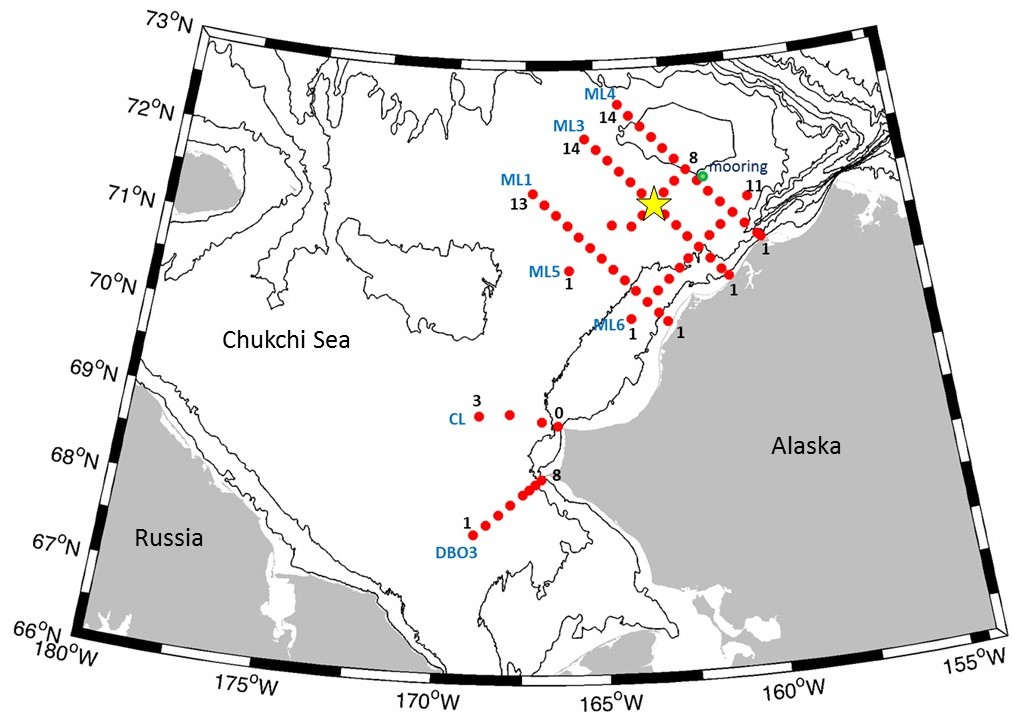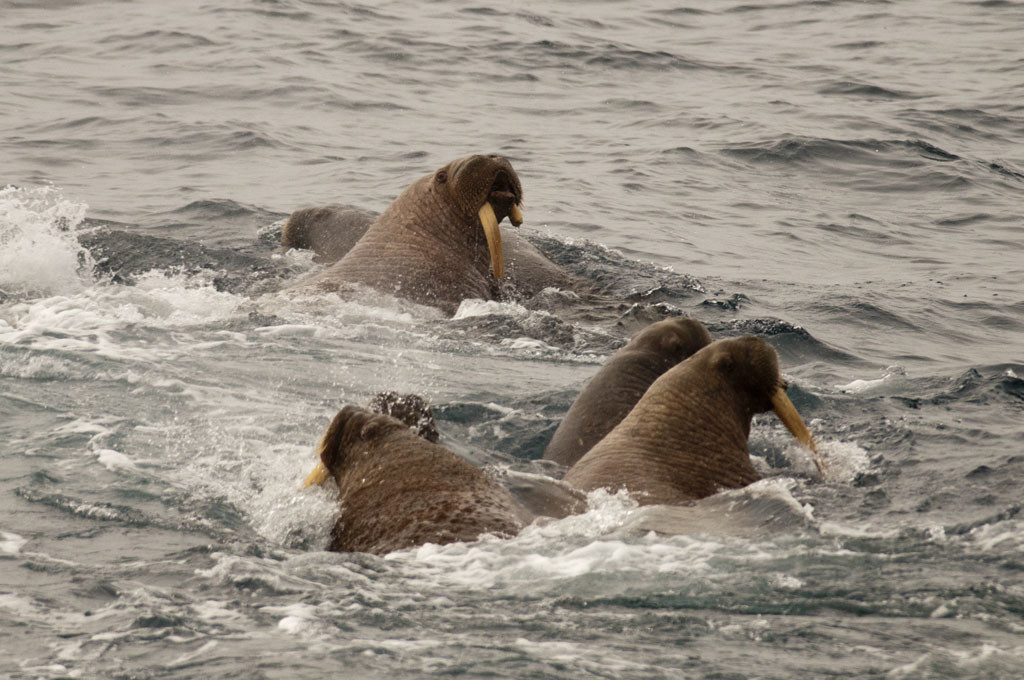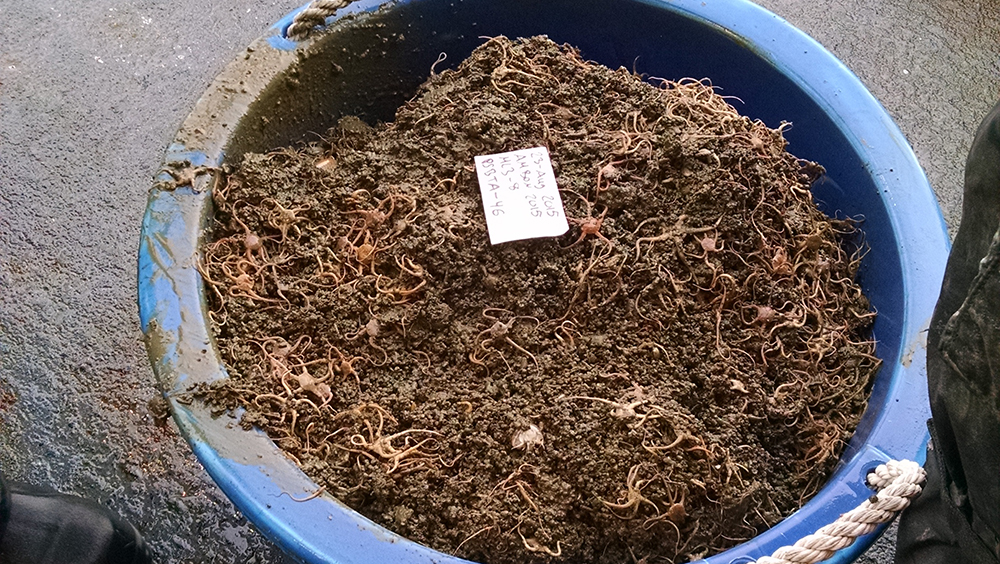Walruses are part of that special group of animals that are so ugly they are cute. In more scientific terms, walrus are part of the pinniped clade, which also includes seals and sea lions, and like to eat clams. We have seen quite a few of them over the past several days. Suzanne Yin calls walruses and all pinnipeds “slugs with teeth.” Judge for yourself:
Walrus, Photo courtesy of Dan Cushing.
In the bird world, we have found the land (water?) of Crested Auklets. We saw many large groups, totaling in the thousands of birds, molting and apparently foraging. Since molting uses a lot of energy and leaves the birds flightless, there is probably a lot of zooplankton in the area to power them through this part of their life history.
We have also found the land of brittle stars! When we were close to shore, the benthic (bottom dwelling) invertebrate community was dominated by sand dollars.
Bucket of brittle stars!
Of course, the things that I find to be interesting might be boring to other scientists. So, I went around and asked a few scientists what is the most interesting thing they have seen so far.
Ann Zinkann – there are so many different interesting things that it’s impossible to choose!
Dr. Jackie Grebmeier – the diversity in the benthic invertebrate community is incredible, particularly with the worms. They vary from slimy to scaly, from red to green, and from less than an inch to six inches long!
Caitlin Smoot – at some of the more nearshore stations, the zooplankton community was dominated by carnivores like jellyfish rather than by herbivores like copepods, which was much unexpected.
Captain Mike Hastings (not a scientist but a salty sea dog) – it’s really great to work with a group of people who not only get along well, but also are enthusiastic about their job. That’s a rare thing in the maritime world.



